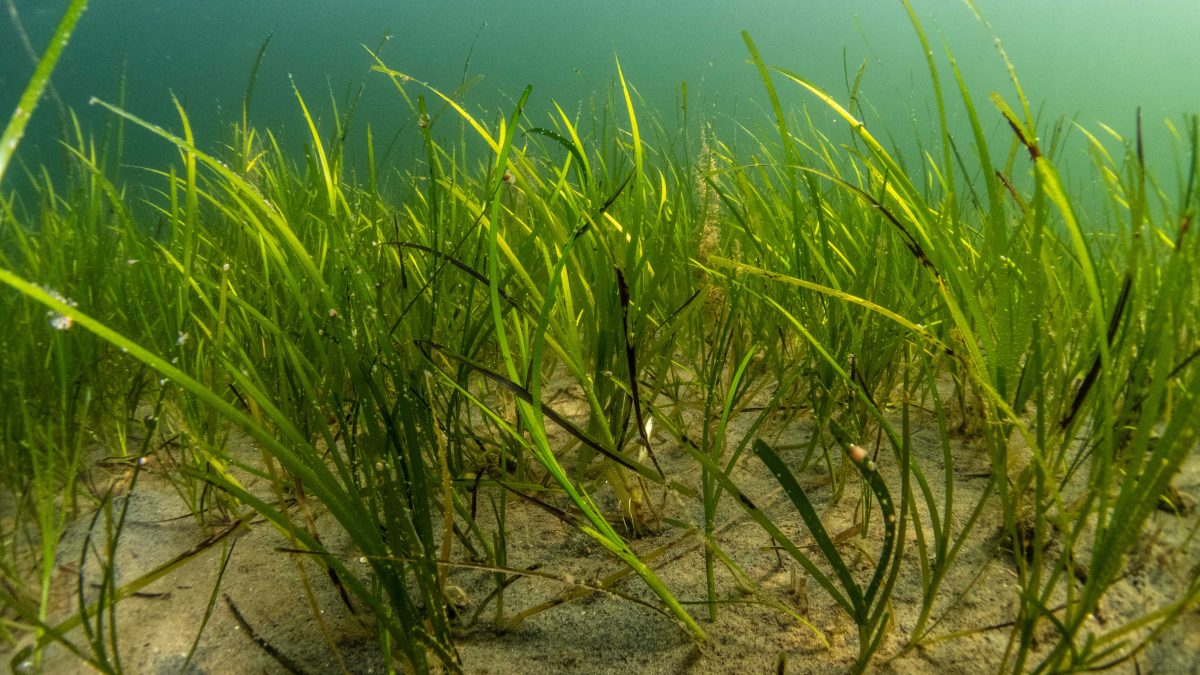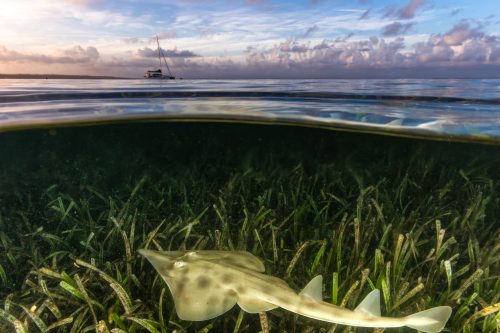Exploring Seagrasses: Their Role in Marine Ecosystems and Current Threats to Their Survival

Photo Credit : Ben Jones
Seagrass is a type of marine plant that shares the same basic structure as terrestrial (land) plants. They have tiny flowers and strap-like or oval leaves. Despite their name, seagrasses aren’t actually true grasses — their closest terrestrial relatives are lilies and orchids.
Seagrasses form meadows in estuaries and shallow coastal waters with sandy or muddy bottoms. They are the only flowering plants, or “angiosperms,” that can live underwater. Like other angiosperms, they produce flowers, seeds, and pollen.
The Role of Seagrasses in Marine Ecosystems

Photo Credit : Jordan Robins/Ocean Image Bank
Seagrasses play a crucial role in marine ecosystems. They provide a safe nursery ground for juvenile fish and invertebrates, offer protection from predators, and serve as a primary food source for herbivorous marine animals such as green turtles and dugongs. Moreover, they also indirectly support other marine life by trapping sediments and nutrients in their leaves, which promotes water clarity and benefits organisms that require light for photosynthesis.
In addition to their ecological roles, seagrasses also contribute significantly to climate change mitigation. They are efficient carbon sinks, absorbing and storing more carbon per unit area than terrestrial forests. This process, known as ‘blue carbon’ sequestration, helps to reduce the amount of carbon dioxide in the atmosphere, a key driver of global warming.
Current Threats to Seagrass Survival
Despite their importance, seagrasses are under threat worldwide. Human activities such as coastal development, pollution, and destructive fishing practices have led to significant seagrass loss. Climate change also poses a major threat, as rising sea temperatures and ocean acidification can negatively impact seagrass meadows.
The loss of seagrass habitats can have far-reaching impacts on marine biodiversity and the people who depend on these ecosystems for their livelihood. It also means the loss of a valuable ally in the fight against climate change.
Conclusion
In conclusion, seagrasses play a vital role in marine ecosystems and in mitigating climate change. However, they are facing increasing threats from human activities and climate change itself. It is crucial that we increase our efforts to protect and restore these valuable ecosystems to ensure their survival for future generations.

